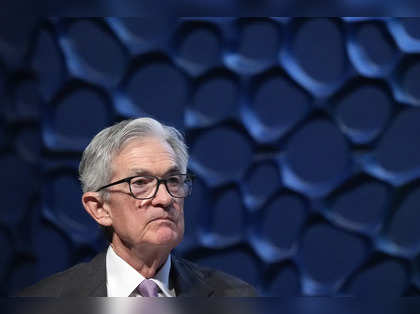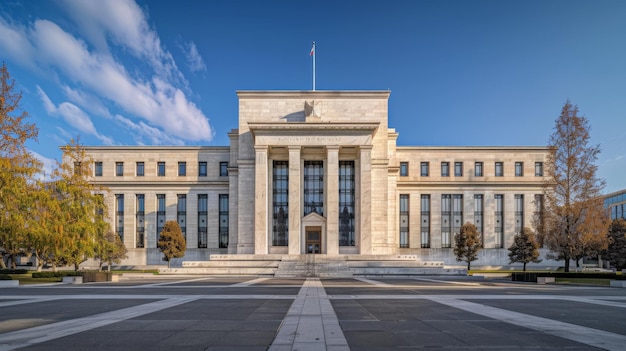The role of the Chair of the Federal Reserve of the United States carries immense significance, influencing economic policies that affect citizens on a daily basis. The current chair, Jerome Powell, who took office in February 2018, has guided the Federal Reserve through a challenging economic environment that includes a pandemic recovery and inflationary pressures not seen in decades. This article explores the latest developments, the challenges facing the Federal Reserve, and the implications of its policies for the economy.
Who is currently serving as the Chair of the Federal Reserve?
Jerome Powell serves as the Chair of the Federal Reserve. He was appointed by President Donald Trump and confirmed by the Senate. His term was renewed by President Joe Biden in May 2022, allowing him to continue leading the Fed amid economic challenges.
Recent Federal Reserve Policy Decisions
In light of fluctuating economic indicators, the Federal Reserve has made significant policy adjustments. The most notable decision is the series of interest rate hikes aimed at combating inflation, which surged above 9% in mid-2022. As of September 2023, the inflation rate has stabilized around 3.7%, indicating a modest success in the Fed’s efforts.
The Federal Open Market Committee (FOMC), which Powell chairs, has maintained a cautious approach by incrementally raising interest rates. In the recent FOMC meeting, officials decided to hold the benchmark rate steady at 5.25% to 5.50%, signaling a wait-and-see strategy while monitoring economic developments.
| Date | Federal Funds Rate (%) | Inflation Rate (%) (CPI) |
|---|---|---|
| March 2022 | 0.25 – 0.50 | 8.5 |
| July 2022 | 2.25 – 2.50 | 9.1 |
| September 2023 | 5.25 – 5.50 | 3.7 |
This ongoing balancing act highlights the delicate interplay between inflation control and growth stimulation, with Powell emphasizing the Fed’s commitment to restoring price stability.
Challenges Ahead for the Federal Reserve
The Federal Reserve faces several challenges as it navigates an uncertain economic landscape. Key issues include:
- Inflation Persistence: Despite recent successes in lowering inflation, pressures from rising energy costs and supply chain disruptions continue to pose risks.
- Labor Market Dynamics: The job market remains tight, with unemployment at 4.0%. However, signs of a slowing economy suggest that job growth may weaken.
- Global Economic Conditions: Heightened geopolitical tensions, particularly with China and the war in Ukraine, may affect trade and investment flows, complicating domestic decision-making.
As Powell and his team assess these factors, they must weigh the impact of monetary policy on economic activity, ensuring that the recovery remains robust without igniting inflation.

Public Perception and Political Pressure
Public perception of the Federal Reserve and its Chair significantly influences the institution’s operations. As inflation impacted everyday life, citizens expressed frustration with rising costs, putting pressure on Powell to take decisive action. This dynamic is particularly poignant as mid-term elections approach, and policymakers from both parties scrutinize the Fed’s role in economic health.
Moreover, Powell’s position demands careful navigation through political landscapes. Historically, the Fed operates independently, though recent trends indicate increasing political scrutiny over its policies. This growing involvement underscores the importance of transparency in the Fed’s communications regarding its policy decisions, fostering public trust.
Future Outlook: What Lies Ahead
Looking ahead, several crucial factors will determine the Fed’s next steps:
- Economic Data Tracking: The Fed will closely monitor economic indicators, including GDP growth, unemployment rates, and consumer sentiment. These metrics guide policy adjustments and expectations.
- Interest Rate Predictions: Market analysts are divided on whether the Fed will raise rates further or maintain the current levels into late 2023 and beyond. Futures markets indicate a potential for rate cuts in mid-2024, depending on inflation trends.
- Global Events: International crises, trade agreements, and tariffs could reshape economic forecasts, compelling the Fed to adapt its strategy accordingly.
| Key Economic Indicators | Current Value | Fed’s Target |
|---|---|---|
| Inflation Rate (%) | 3.7% | 2.0% |
| Unemployment Rate (%) | 4.0% | 4.0% |
| GDP Growth Rate (%) | 2.5% | 3.0% |
As the Fed contemplates these dynamics, Jerome Powell’s leadership will play an integral role in steering the nation towards economic stability.
The Impact of Federal Reserve Policies
The policies enacted by the Federal Reserve, under Powell’s leadership, have far-reaching effects across various sectors of the economy. Interest rate changes influence consumer borrowing costs, mortgage rates, and business investment. The Fed’s stance on monetary policy also affects stock market performance, often serving as a barometer for economic confidence.
Moreover, the ripple effects of the Fed’s actions are felt in global markets, as investors worldwide respond to U.S. monetary policy. The interconnectedness of economies amplifies the importance of the chair’s decisions, as other nations closely observe and possibly emulate the Fed’s strategies.
As the U.S. economy evolves, the role of the Chair of the Federal Reserve becomes even more crucial. Powell’s actions will significantly influence both immediate outcomes and long-term economic health, especially as the Fed grapples with inflation management and economic growth.
In an ever-changing economic landscape, the Chair of the Federal Reserve remains a pivotal figure in shaping the future trajectory of not just the U.S. economy, but on a global scale as well. Observers of the economy will continue to follow Powell’s decisions as they monitor the health of the financial system and the broader economy.


